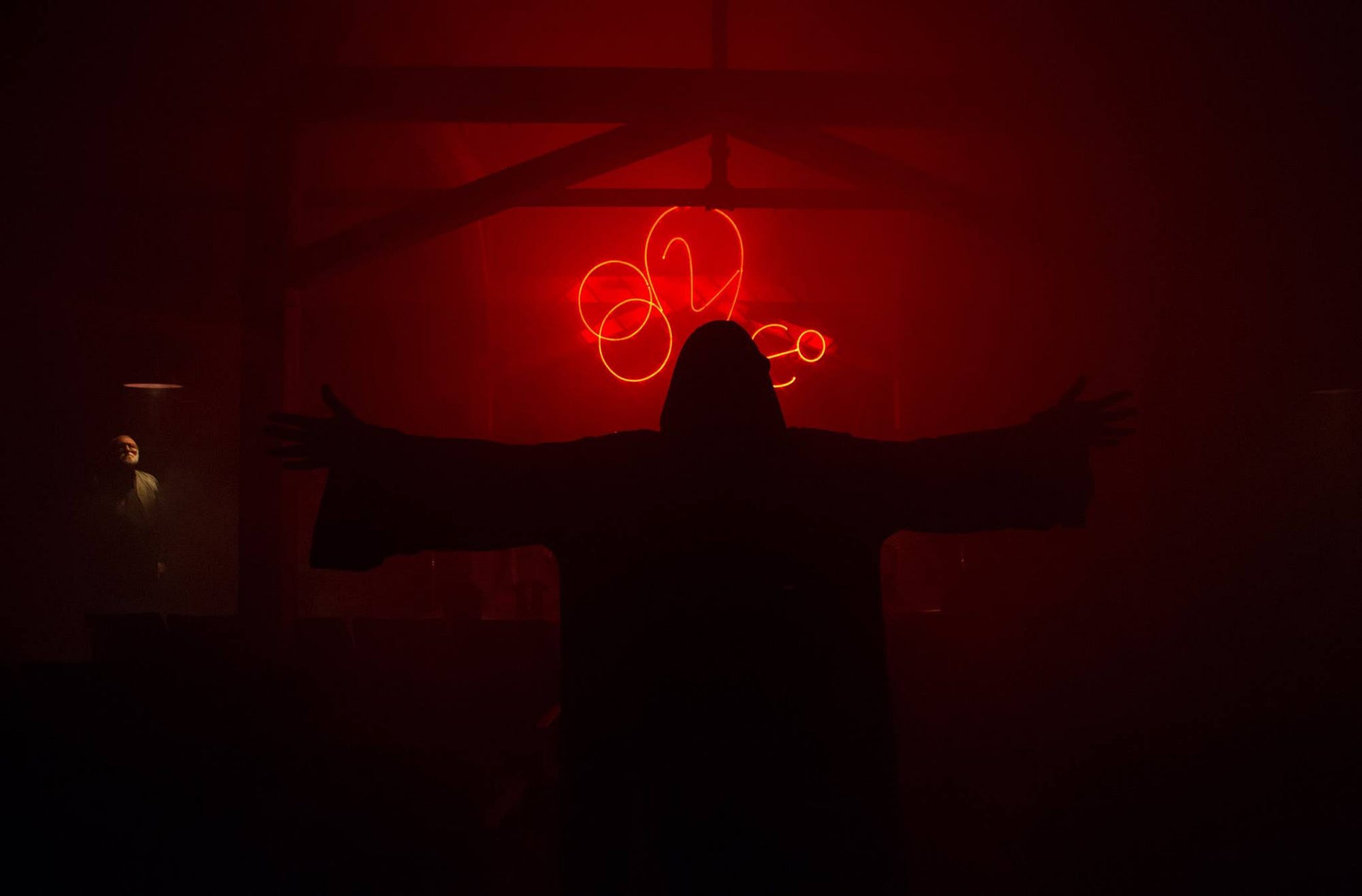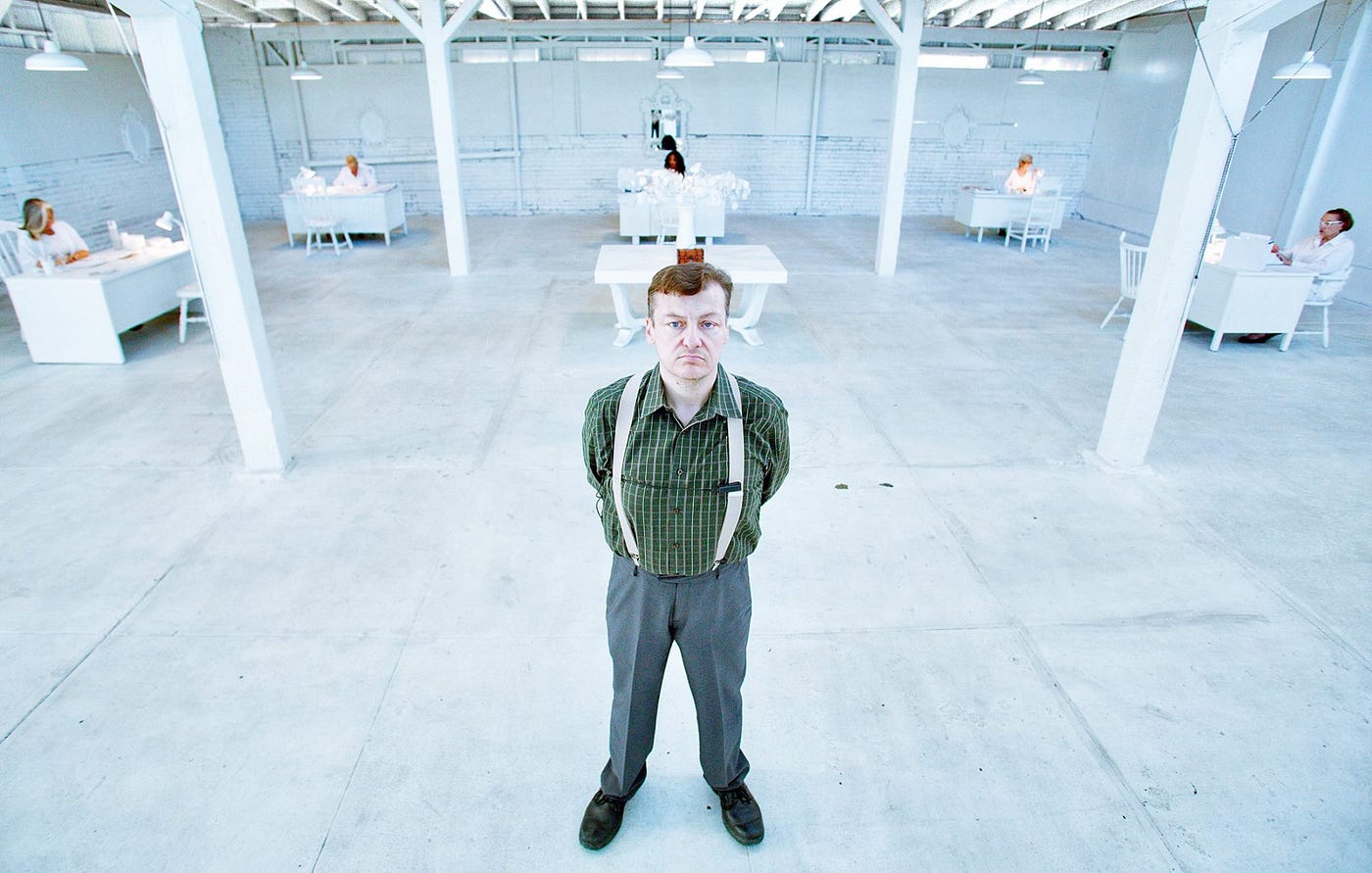
I love theatre, but I find little “fun” in going to the theatre. Theatre is work, and I can’t escape that. I don’t get lost in it. I note the ways in which the set evolves and how every object onstage fits within the design. I look to see the angle and color of a particular light during a scene. I’m aware of how long it is until intermission and of the uncomfortable seats, and of whether things are about to go wrong onstage. Sleep No More was the first time the world fell away. I didn’t stare at the lights, I didn’t contemplate the “how” of it. I was just present in an alternate reality. Until that moment I don’t think I had experienced such intensity of emotion at the theatre, so much sensory overload.
I had rules back then. I did not do interactive theatre. It was all fun and games until the actors acknowledged the audience and then it was time to run. This goes back to freshman year, at a performance of The Canterbury Tales, when an actor got out of his seat and tried to pull me out of mine. Tried, because I grabbed onto my seat and held myself down, and this resulted in a five minute tug-of-war between actor, audience member, and chair in front of everyone. The audience found it hilarious. He eventually let me go and picked on another poor person. But at Sleep No More, I entered a room and was alone with Hecate. She locked eyes with me, and I had a choice: I could run, or take advantage of the opportunity, the mask I was wearing, and the fact that I was alone — no one would see or judge me. I was terrified and it might not seem like a big risk, especially given how passive the level of participation in Sleep No More actually is, but I chose to let this private one-on-one moment happen. She took me into another room and spoke directly to me. It was so intimate; part of me broke, and another part fell in love, just a little.
After, I became more willing to take risks, to do things in spite of the fear I felt of them. Not one bit of that experience was created for me but it felt as though it were, and for this purpose. Does it matter that it wasn’t? I was able to let myself go fully into the experience, and in return it showed me something I was missing. This piece of art which had its own narrative and worked perfectly fine without me also made space into which I could project my own self and its needs. My obsession with immersive theatre and “experiences” began then, and I became determined to find the next thing that would make my world fall away.
It wasn’t until recently that I experienced this again. I had become immune. I started to know the tricks in immersive theatre and to expect them, and was able to go back to looking at the lights, and watching for the “how.” There were still moments of brilliance but they didn’t affect my sense of reality.
I don’t remember how I found The Tension Experience. It was horror, and I thought the idea of exploring or exploiting my fears held promise. I thought fear, if I truly felt it, would keep me from staring at the lights.
Tension is what might happen if you combined the Jejune Institute with Sleep No More and a healthy dose of paranoia. What began as a seven month alternate reality game culminated in an immersive horror production, Ascension, in Los Angeles. Ascension was tailored to each participant, designed to get inside their heads and blur the lines between the performance and reality. I went twice — the first time, I left underwhelmed. I came hungry and my expectations were sky high. I wanted that world-falling-away experience and instead was staring at the lights. Others came back reporting that Tension “knew” things about them that they shouldn’t have known. I wanted Tension to “figure me out,” whatever that meant (because god knows I couldn’t), and deliver…something. Disturbing? Scary? Mindfucking? And when they didn’t, I ended up in a long conversation with Clint Sears, one of the creators, about why. My conclusion was that the problem was me — that it would take more to get to me, more specificity, intensity, something. I doubted it would ever happen.
I decided to try again because I heard that second visits resulted in completely different experiences, more intense and personal. Between Ascension #1 and #2, I wrote a few things. Recorded a podcast. Had awesome, extensive conversations with other artists in and outside of Tension. A week before I went for my second time, an article that Howlround had been sitting on for six weeks was published with impeccable timing. Some of what I’d said was critical. I also hadn’t kept it a secret that I was planning to move forward with my own ARG performance project during my first sabbatical two years from now. To put it bluntly, I didn’t keep my mouth shut.
As luck would have it I ended up at the last performance of Ascension with four other “second-timers.” Ascension, unlike Sleep No More, asks its audience to be active. The characters interact directly with and make choices based on you specifically. I was taken almost immediately to the processing room, which is one of the first “scenes” the audience experiences and is designed to make participants question what Tension “knows” about them. They marched me in alone, straight to Simon, the man in charge, who ordered me to strip down to my underwear. For the next hour, I answered his questions (at one point he looked me squarely in the eye and said “we know exactly why you’re here, Megan.”), and then waited while the other second timers were brought in. Once gathered, we were made to stand in a circle, holding hands, heads bowed, while Simon spoke.
“One of you thinks she’s better than the others.”
“In fact, she thinks she’s better than US.”
Get Megan Reilly’s stories in your inbox
Join Medium for free to get updates from this writer.
SubscribeSubscribe
“She thinks she can do THIS better than we have.”

I knew, unequivocally, he was talking about me. I thought of everything I had said and written about Tension over seven months — being called out on things said “out of game” wasn’t among the scenarios I’d imagined that night. This wasn’t about the narrative of the show. This wasn’t fiction, except it was — he was in character, we were in the processing room. But my real life outside those walls was being brought in, a life that acknowledged that this reality was an illusion.
After several scenes that were narrative-based, I was blindfolded and led into a room. When the blindfold came off, the entire cast was staring as me — about fifty people. Their leader, Addison, stood in front. She told me that they’d been reading everything I’d written and were wondering “with everything you’ve said about us, is there anything you would like to say to us?”
In other words, say it to our faces.
No, I’ve never had characters in a play call me out for my words and actions before.
No, I was not looking at the lights.
Yes, I was present. And speechless.
A man removed my glasses and smeared my face with blood. “You are absolved of these sins.” The blindfold went back on, and I was led out.
Later, I was on a friend’s couch, unraveling, asking whether she thought they (the creators) were “mad at me.” I had been acutely aware for months of the things I was saying. It kept me up at night, rewriting articles and getting sick with anxiety. I felt like I’d been serving two masters — Tension, which I love and of which I wanted to be a part, but also my craft, which requires me to be critical. And now I’d had an “experience” crafted around this very fear, which meant it was justified, rooted in reality and of course they hated me.
The last part — “you are absolved of these sins” — came back to me as I was boarding the plane a couple of hours later, and I started crying immediately.
What actually happened that night? For about a day I was convinced this entire experience had been carefully planned for me, every word. I learned shortly after that at least the first part, the bit about me thinking I’m better than everyone, was improvised based on how I was acting at the time. Unlike Sleep No More there was an element of personalization. But just like that piece, I mentally took something and ran with it. I filled in the rest, creating all of the necessary justifications for why the rest of that hour in the processing room was about me.
I got what I was there for. I saw a part of myself that night that I hate — Ascension put me in the position of acknowledging it and answering for it in front of others. I was still projecting even after the fact — when Clint came out as I was heading back to my car and walked by without introducing himself, he later said something to me about how I needed my illusions kept intact. This recalled our previous conversation, and honestly I would not have processed the night in the same way had we talked. I would have had reassurance. Again, another piece that fell into place perfectly, extending the performance into reality. Does it matter if it was intentional?
Tension warned us that we would get out of it what we put in — I gave Tension myself, and at Ascension saw myself in return. The result, as with Sleep No More, might change me. The intimacy of immersive theatre lends itself to audience projection that creates these intense personal experiences. That’s truly powerful magic, and not for the weak. The question I have right now is whether or not I am “immune” to what comes next, and The Lust Experience begins next year.
Dear Tension. Next year, crush my soul. Love, Megan.



















Discussion